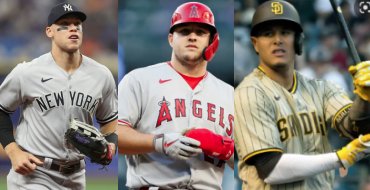As many veteran horse race bettors know, the Kentucky Derby is the home of big longshots winners – horses like Giacomo, Mine That Bird, and Monarchos have paid huge prices in recent years, and winners of 20/1 or more happen so often that it isn’t even surprising anymore. In the Preakness, though, the story is very different. Longshots just don’t win in this race. In 135 runnings of the Preakness up to 2010, the longest odds ever for a winner were from Master Derby in 1975, and at 23/1 he hardly broke the bank compared to some Derby winners. From 2000-2010, the only Derby winner to pay higher than 3/1 was Bernardini at 13/1, but that race featured incredibly heavy betting on Barbaro so the odds were skewed for the other horses and Bernardini certainly was not the longshot that the odds would indicate.

So, why are the odds in the Preakness so much lower? There are a lot of factors, but here are four of the more significant ones concerning this part of the Triple Crown:
Success of Derby or Oaks horses – In the 25 years of the Preakness up to and including 2010, there were 22 Preakness winners who had run in the Kentucky Derby, and one more who had run in the Kentucky Oaks the day before the Derby. The horses who run in those two races are typically the class of the three year old class, and the ones that fare best in those races – or have the best excuses for their poor performances – are the one who continue on to the Preakness. What you have, then, is a small number of thoroughbreds who bettors can choose from that are amongst the best in the country. Given that small group, it’s not a wonder that the public often bets down the eventual winner.
Generally low quality of new invaders – From time to time there is a very good horse who skips the Derby and heads to the Preakness – Bernardini is the ultimate example. For the most part, though, owners dream of winning the Derby more than anything, so if a horse has any talent and enough earnings he will go to Kentucky. The horses that join the field after the Derby, then, are quite often not very good. They are either horses with very little chance that are just taking a shot, or talented horses with clear flaws that kept them out of the Derby. It’s easy for bettors to discard a lot of these horses, so they are left with a manageable group of horses to choose from, and those legitimate horses are bet down as a result.
Recent form snapshot – One of the hard things about the Derby is that the best horses have come from all over the country, and many of them haven’t raced for a month or more. That makes it tough to get a true sense of the form they are actually in at the moment. In the Preakness, most of the top contenders are coming off just two weeks of rest since the Derby, so we know their form with more accuracy than normal, and we can also assess how they stack up against the rest of the Derby horses.
Smaller field – The Derby is capped at 20 horses, while the Preakness is capped at just 14, and it often doesn’t get that many. The more betting options that are available, the higher the chances that a good horse is going to get overlooked and go off at higher odds, so it only makes sense that the prices can be higher in the Derby.
So, given that the odds are typically considerably lower in the Preakness than the Derby, how can we adjust our betting in an attempt to make the best profits we can? Here are three ways:
Evaluate the value of favorites closely – You have to be ruthless in your handicapping of Preakness favorites. Either they are good enough that you think they are going to win and you will live and die by them, or you don’t respect them and you will discard them. The price is often too low for you to go halfway. That’s especially true if the favorite is the Derby winner, and if he won in impressive and popular fashion. That means he’ll draw a huge amount of public money, and the value on him will be razor thin. If you like him and you are serious about making a profit then you can really only afford to bet on him to win.
Key the exotics – If you do like the favorite, or one of the other low priced horses, then you can improve your ROI significantly compared to a win bet by keying the horse on top of the exotics like the exacta and the trifecta. Keying a horse means that he is the only horse you pick in the win spot, and then you pick several other horses to finish second or third. By keying the low priced horse on top you can keep the total cost of your ticket down while still covering several possible combinations and giving yourself a chance at a nice payoff and a handsome return – especially if a longer priced horse finishes second or third.

Go wide, not deep – In the Derby my betting strategy is typically to focus on one exotic – most often the trifecta – and involve a lot of horses in it. You know you can afford to spend a lot of money on different combinations involving a lot of horses because there is a very good chance that the payoff will be high and your risk will be rewarded. The lower typical prices in the Preakness mean that that strategy often doesn’t work out as well. Instead, it makes much more sense to focus on a few horses you like – three or four, for example – and find different ways to combine them in bets. You might use those horses in exacta boxes and wheels, trifecta boxes, quinellas, or in the pick three and pick four. In short, you are focusing on fewer horses and looking for more ways to cash in on your opinion.






